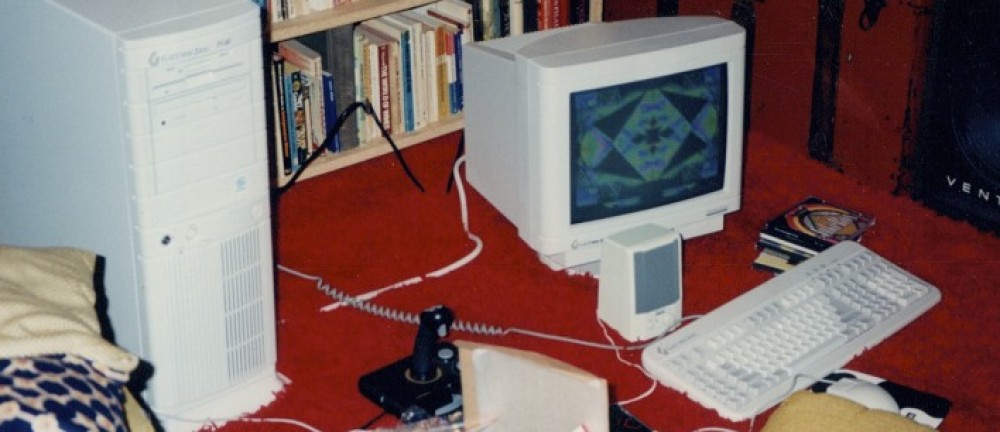Chances are pretty good that if you crack open a dusty storage closest at any large University, you’ll find an old slide projector, or an unlabeled box of 35mm slides. For decades, University lectures and research work relied heavily on slides, created from photographs taken on reversal film or charts and diagrams transferred to slides for presentations.
Since 2006, the Digital Content Library within the College of Liberal Arts has been scanning slides collected by our faculty as part of their research and instruction. Hundreds of thousands of slides have been scanned and cataloged, creating a unique collection of material from around the world and across the decades. Each of these slides was scanned one at a time, on a scanner like the Nikon CoolScan. These produce a quality image, but are slow and require an operator to load each slide. With hundreds of thousands more slides in the “someday” pile, one-at-a-time meant a lot of slides would probably never get scanned.
Inspired by some commercial products and a hacker spirit, we decided to build our own automated slide capture unit, using a classic Kodak Ektagraphic carousel projector, combined with a Canon 5D Mark III digital camera.
The basic theory of operation is to leverage the automated loading and advancing capibilities of the projector, and not much else. The lens is removed, and the illumination bulb is replaced with a lower output (and much cooler) LED. The camera, with a macro lens, focuses on the slide sitting inside the projector. A small Arduino controller manages the whole apparatus, advancing the projector and triggering the camera.
Because this was a hobby project, and not a core part of our jobs, it evolved very gradually over the fall of 2017. We started by placing a large LED light panel behind the projector, with the lamp drawer removed, to get a sense of the image quality. Some basic comparisons against our Nikon scanners hinted that the quality was as good or better as the dedicated scanners.
Because we don’t run a full-time slide scanning facility, we wanted to keep our scanning station relatively portable. For that reason, it was important that the projector stay self contained, rather than relying on an external light source. For longevity and consistency, we wanted an LED. We knew we needed very even illumination, which meant we would likely be using diffusion. That meant starting with a high output light source. If you’re looking for a high output LED, you’ve got a couple options. You can get a fancy branded LED with a quality driver, or you can get a slighty sketchy LED directly from China, via Ebay or Alibaba. We went with the latter. As a bonus, it came with a basic LED driver and heatsink.
With the LED in hand and firmly mounted to its heatsink, we started figuring out how to mount it in the projector. We decided to mount the LED in the same place as the original bulb, utilizing the existing removable light tray. This means the light mechanism can be moved to another projector easily. The heatsink was ever-so-slightly larger than the original lamp, so a few pieces of the mechanism had to be cut away. For testing, the heatsink was mounted with some zip ties.
The LED runs on DC power. Rather than trying to pack a transformer into the projector (which is exclusively AC), we simply ran the power cables out through a slot in the housing.
With the LED in place, we did some more testing to see about achieving even lighting. Our friends in the TV studios gave us some diffusion material, so we were able to stack sheets of diffusion until we could no longer perceive any hot spots on our test slides.
Once we had the LED in place, we were pretty confident the project would work out. The remaining bits, involving some basic fabrication and automation, were things we’d tackled with past projects like our automated photogrammetry rig and our RTI domes. We repurposed a spare Arduino Uno to control everything. Because the projector uses a 24 volt AC signal (!!) to control the slides, we couldn’t get away with a simple transistor control. Since we were only building one of these, we decided to buy a premade Arduino Relay shield from Evil Mad Scientist.
A little bit of code and some gator clips let us confirm that everything worked as intended. All that was left was the cleanup and assembly. We designed some basic mounts in Tinkercad and printed them on our Makerbot Replicator Mini. The entire electronics package was small enough to fit into the remote storage compartment on the side of the projector. Because the door is easily removable, it’s still a snap to move the entire setup to another projector.
At this point, the rig is assembled and in production. We use SmartShooter 3 on a computer, attached to the camera via USB, to storage the images as they’re acquired. We use BatchCrop to crop, clean, and straighten the images.
We can image slides at the rate of roughly 3 minutes for an 80 slide carousel. In fact, it takes far longer to load and unload the carousel than it does to perform the capture.
[youtube https://www.youtube.com/watch?v=8Z7GMDpcPGc]
Because we used a lot of repurposed parts, we don’t have a complete Bill-of-Materials cost of the rig, but it could be replicated for well under $100 (assuming you already own the camera and projector). We could probably put another unit together in an afternoon.
We’re really excited to have done this project, and we think it’s a great representation of the LATIS Labs ethos: we saw a problem that needed solving, iterated in small steps, and ultimately put together a workable solution. Our next build is a little more complicated and a bit more expensive – if you’ve got a few thousand dollars lying around, get in touch!






